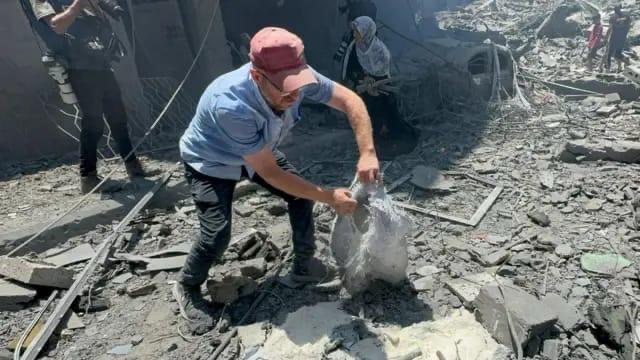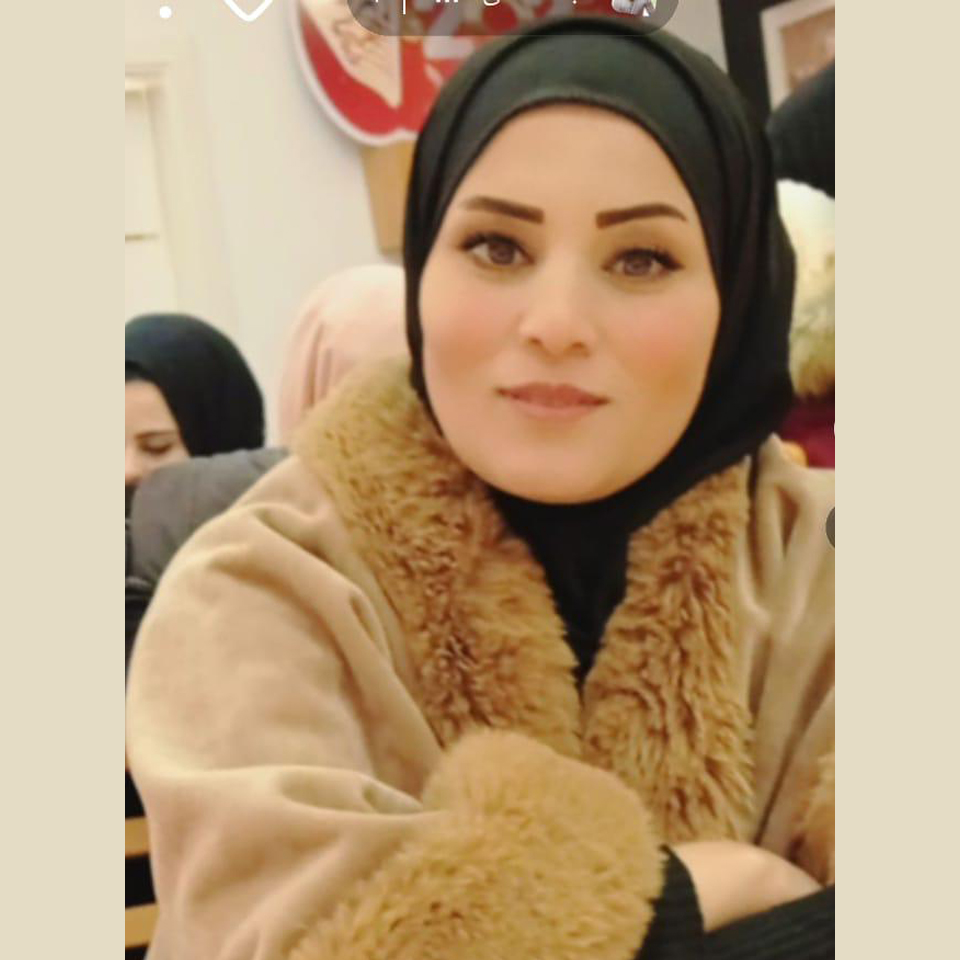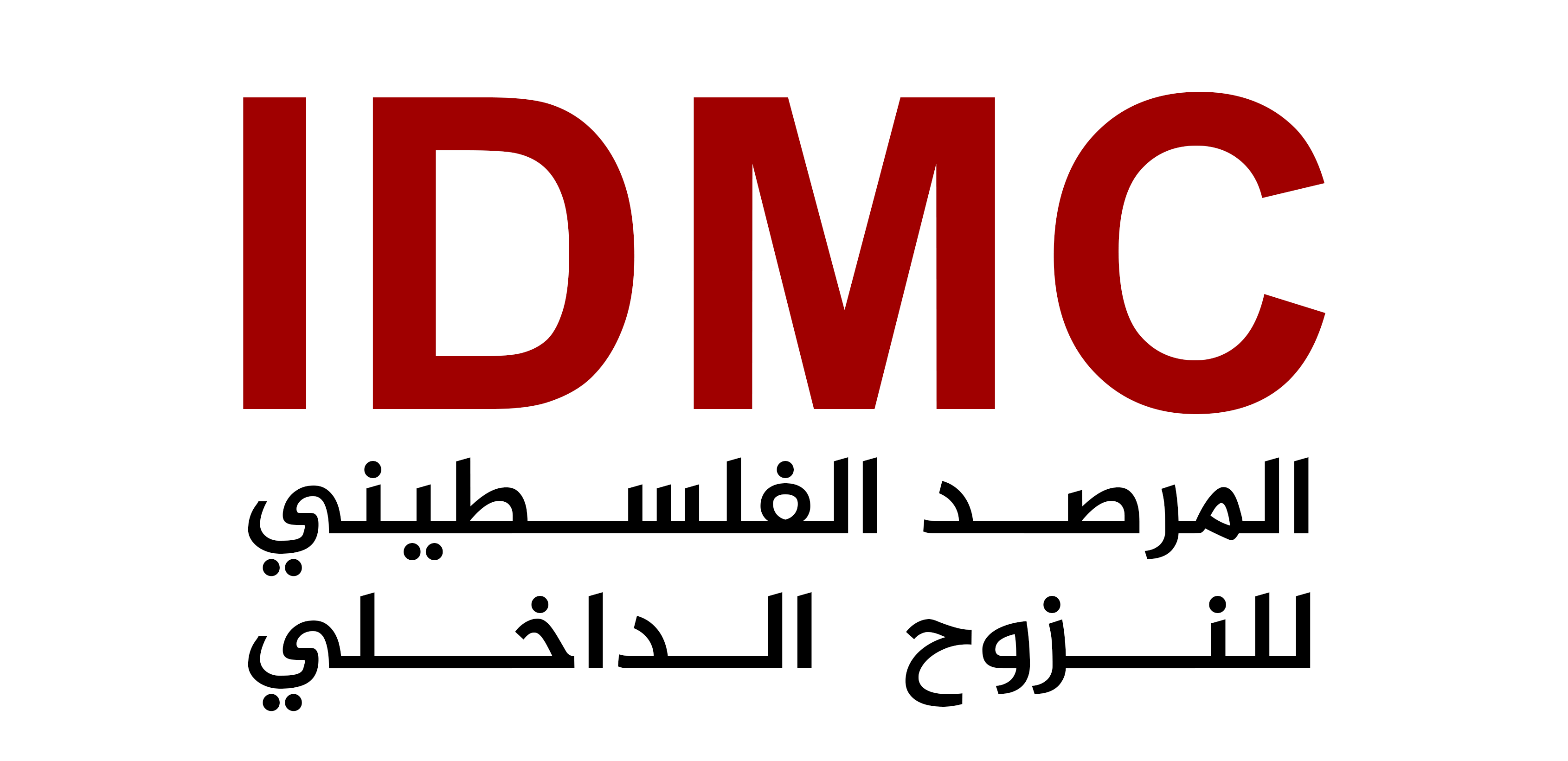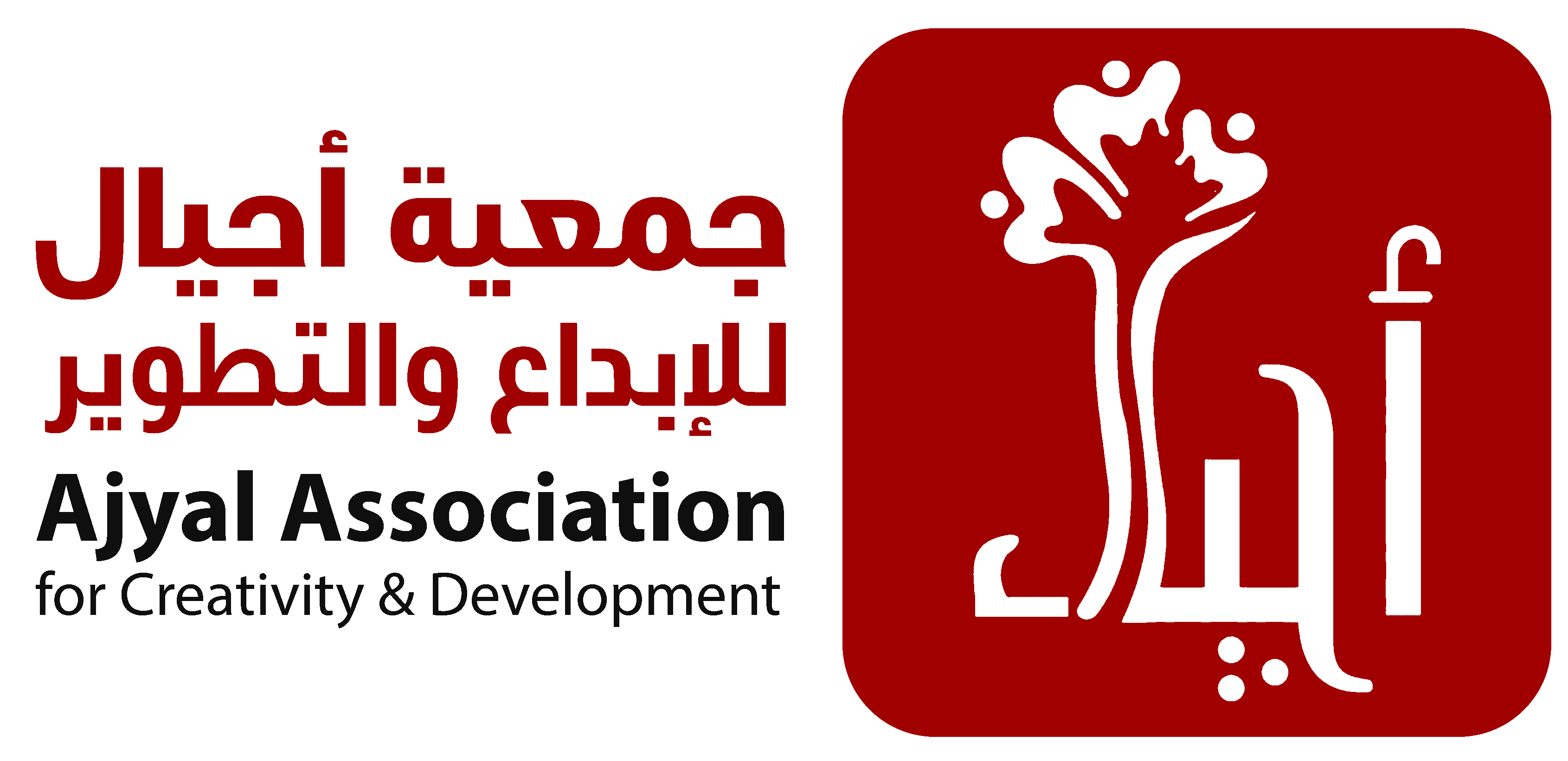
The Phenomenon of Bodies Evaporating in the Genocidal War on the Gaza Strip “Honoring the Dead Is in Their Burial”
Yet the dead of the Gaza Strip are denied the honor of burial. They are consumed by the flames of losing their dearest ones and by the fire of being deprived of a proper farewell and dignified burial. The genocide in Gaza did not stop at the killing of Palestinians—it has also condemned them to a death in which their bodies are prevented from being interred. It is every human’s right to be laid to rest in the earth and for death to be complete with burial, farewell, and mourning. Yet entire families have had their remains buried under rubble, presenting before us a dual colonial policy of erasure: the erasure of a person’s life and the erasure of his body after death, simultaneously. This colonial system derives its dominion over the land from the body of the Palestinian and governs the realm of death in its entirety, along with all the associated emotions, rituals of grief, and mourning. The cruelty of dissolving the bodies of missing martyrs beneath heaps of rubble lies in depriving their remains of even the slightest passage from the announcement of life to the announcement of death. For the victims’ families, the final declaration can only be achieved by embracing what remains of the body, kissing it, and then honoring and laying it to rest in its final home—thus allowing them a destination that reunites them once again. The Israeli occupation has stripped Palestinians of their legitimate right to bid farewell to and bury their dead, for their bodies have completely evaporated without a trace due to its use of internationally prohibited weapons.
Evaporation and Disappearance of Bodies: The Most Miserable Episode
Since the onset of the October 7, 2023, war on the Gaza Strip, the Israeli occupation army has unleashed a quarter of a million airstrikes—delivering over 85,000 tons of explosives—causing enormous devastation across the region. These explosives have been responsible for the loss of more than 10,000 Palestinians, with over 2,800 bodies evaporating into nothingness, and 8,420 corpses having their traces forcibly obliterated in areas penetrated by Israeli ground forces. This is a consequence of the Israeli military’s use of weapons banned under international law. Dr. Mohammed Al-Mughayir, spokesperson for the Civil Defense in southern Gaza, confirmed that these weapons contain materials that cause the martyrs’ bodies to dissolve and evaporate, mixing with the sand so that no trace remains. He stated that what Israel has done amounts to war crimes and crimes against humanity.
Indeed, the evaporation and disappearance of bodies during the war are caused by the use of weapons—of unknown specific type—by the Israeli occupation. These weapons generate temperatures ranging from 900 to 2,500 degrees Celsius at the center of a missile or shell explosion, causing bodies at the scene to melt due to the extreme heat. As a result, the bodies vanish by turning into tiny, invisible particles that become incorporated into the soil. In other words, high temperatures cause the human body—composed largely of water along with various atoms and cells—to melt into minute particles that mix with the earth, thereby disappearing entirely. This explanation is supported by Dr. Mohammed based on field observations and reports from other physicians.
Family Narratives That Melt the Hearts
According to initial testimonies and gathered information, a hidden facet of the horrific crimes committed by the Israeli occupation in Gaza has been revealed. The evaporation or melting of the victims’ bodies is attributed to thermal bombs dropped by Israeli aircraft on civilians’ homes. In addition, thousands of victims remain listed as missing—either because they could not be recovered from under the rubble (due to a lack of equipment and technical capabilities), because their bodies could not be located in areas cleared of debris, or because the Israeli army forcibly concealed them.
Several cases have been documented in which victims killed in Israeli airstrikes, when attempts were made to recover their bodies, were found to have either disappeared entirely or possibly turned to ash. This raises serious questions about the nature of the bombs used in these attacks. Umm Osama Tabbasha, a resident of Al-Nusairat, recounted the disappearance of her son Ahmed’s body during an Israeli bombing of Al-Jaouni School on (11/9/2024). She said that Civil Defense teams and family members made exhausting efforts to search for him at the scene and around the school, yet no trace was found—leaving her heart suspended as her thoughts wandered around the school in search of her son’s remains.
Rond Bakr is another witness to the tragedy. She recounts that on (19/3/2024), during the siege of the Al-Shifa Medical Complex, the house to which her mother had been evacuated was targeted in an Israeli bombing. Her mother, her sister Rinad, and her brother Ady were killed instantly. Two days later, as machinery was withdrawn from around the complex and residents gathered to recover bodies from the rubble, teams recovered the corpses of her sister and brother—yet her mother’s body had completely evaporated, leaving no trace to this day. Meanwhile, Reem Suleiman Hussein Bureis from Al-Bureij Camp, tears streaming down her cheeks, tells of the loss of her sister’s seven children as a result of an Israeli bombing of the house they inhabited. Four days after the bombing, searchers found only a hand or a foot, with the rest of their bodies completely evaporated; despite their utmost efforts, they could not recover the remains.
Doctors’ Testimony Regarding the Evaporation of the Martyrs’ Bodies
Doctors confirmed that the appearance of unusual traces on the victims’ bodies is unprecedented, attributing it to the high temperatures produced by the missiles used by the Israeli occupation army. Dr. Muneer Al-Barash stated that many victims’ bodies evaporated and melted, leaving no trace in northern Gaza—describing this phenomenon as “organized genocide and ethnic cleansing.” Dr. Mohammed Abu Salem, an emergency physician at the Al-Aqsa Martyrs’ Hospital, provided a detailed description of the cases received in the emergency department during the intense bombardment of Gaza. He explained that the emergency department received many injuries unlike those typically seen in wars: some bodies arrived completely charred, others with parts missing, and many of the injured suffered from severe burns and bizarre deformities.
Abu Salem added that he and his colleagues observed extremely severe burns—complete charring—in most of the injured, with burns so severe that they reached the bones, and the skin was entirely blackened and charred as if the victim had been exposed to temperatures far beyond those of ordinary fires. In some cases, there was no trace of the deeper layers of skin or even muscle, indicating exposure to an exceptionally intense heat source. Parts of the body (such as limbs or the head) would vanish as if evaporated, and some bodies arrived at the hospital without a head, arms, or legs—not through clear amputation but because these parts had simply disappeared as though they had evaporated. In some instances, no remnants of the missing parts were found at all, suggesting that an explosion or extreme heat caused their immediate dissolution.
Furthermore, he noted that some injured individuals arrived with their bodies deformed in an unusual manner—the skin and muscles partially melted or fused, as if exposed to a chemical agent or a special type of heat that dissolves tissues. According to his interpretation, this indicates exposure to temperatures that cannot be caused by ordinary shells; rather, it points to the use of highly potent incendiary weapons such as white phosphorus or specialized thermal bombs. The evaporation of body parts suggests explosions of such intense heat—possibly from weapons generating temperatures of thousands of degrees Celsius in an instant—due to the use of advanced and internationally banned arms capable of causing abnormal burns and the disappearance of body parts.
Internationally Banned Weapons
In previous wars on the Gaza Strip, Israel employed weapons banned under international law—such as white phosphorus—which is regarded as one manifestation of Israeli brutality. Not only that, but during the October 7 war—and specifically in April (Nisan) 2024—a new and horrifying level of killing was documented in Gaza, with victims whose bodies appear to have evaporated or melted as a result of an Israeli bombing of Al-Tabaeen School in Gaza.
The Israeli occupation army used thermal “vacuum” bombs, a type of explosive that produces a high-temperature, high-pressure blast and generates a strong shockwave over a large area. Unlike conventional explosives that rely on chemical reactions for detonation, thermal weapons operate by dispersing a cloud of fuel particles (usually in the form of liquid droplets or fine powder) over a wide area, which then mixes with oxygen and ignites. This process creates an enormous pressure wave and intense heat that can reach up to 2,500 degrees Celsius, with devastating effects in confined spaces.
The rationale behind the Israeli military’s use of such weapons lies in its inability to achieve progress in certain stubborn areas, prompting it to resort to these arms due to fear of heavy losses among its forces in the targeted region. This specialized weapon not only serves as a combat tactic and deterrent against the opponent but its effects extend beyond the wounded and dead to contaminate the soil and surrounding environment. As one account put it: “The United States of America could not remain at Baghdad Airport before having to scrape the ground after it was contaminated by the use of this type of weapon—until a new, safe layer of earth emerged.”
A Reading on International Law Concerning the Evaporation of Bodies
The evidence is not conditional; the crucial point lies in the staggering number—reaching 22,000—of bodies that have either evaporated, disappeared forcibly, or remain buried under the rubble. This number represents victims targeted with internationally banned weapons. The Fourth Geneva Convention of 1949—especially its First Protocol, which Israel signed but did not ratify—states in Article 32 that “the family has the right to inquire about its members.” Article 33 calls for facilitating access to the truth, exhuming graves, and determining their fate, while Article 34 prohibits the violation of the dead. What the Israeli occupation army is doing constitutes a violation of the sanctity of death. These crimes are so egregious that they defy human comprehension in the 21st century, given the use of internationally banned weapons. International humanitarian law prohibits the use of thermal bombs against civilians in populated areas, as stipulated by the Hague Conventions of 1899 and 1907, in addition to the Geneva Conventions of 1949—and their use is considered a war crime under the Rome Statute of the International Criminal Court.
Furthermore, the Israeli army continues to employ various types of weapons, munitions, and disproportionate destructive power against Palestinian civilians and their property. This is in flagrant violation of the rules for protecting civilians and their property from the ravages of war as laid out in international humanitarian law—including the Fourth Geneva Convention of 1949, which is designed to safeguard civilians during armed conflict.
Many human rights and international organizations continue to call for the formation of an international investigative commission comprising specialized experts to examine the weapons used by the Israeli occupation army and to provide a precise description of the nature of these internationally banned arms. This includes the possibility that bombs generating extreme heat are being used to evaporate victims’ bodies as part of its wide-scale military assault on Gaza since October 7, and that the Israeli military is resorting to causing massive destruction in entire residential blocks through the use of robotic systems—resulting in enormous numbers of casualties and injuries—and raising concerns over the possible employment of “thermal weapons” or what are known as “vacuum bombs.”
The Weak Role of International Institutions
In an effort to monitor the role of international institutions in documenting the phenomenon of “body evaporation” resulting from the use of internationally banned weapons, Dr. Mohammed Al-Natour noted that the role of these institutions requires specialized international efforts. However, the organizations expected to undertake this task face significant political and technical challenges due to the internationally sanctioned documentation mechanisms and the collection of field evidence. International human rights organizations—such as the United Nations, Human Rights Watch, and Amnesty International—rely on satellite imagery to track attack sites before and after incidents, as well as forensic reports (in cases where any evidence remains) and testimonies from survivors and rescuers to understand the nature of the injuries. Cases in which bodies disappear entirely may indicate the use of banned weapons, prompting specialized laboratories to analyze residual materials to determine whether depleted uranium, white phosphorus, or other thermal weapons were employed. Yet, political and diplomatic obstacles, lack of field access, and the prevention of investigative teams from entering targeted areas (as has happened in Gaza and Syria) hinder these investigations. Obstructions are often justified on the grounds of “security conditions,” legal procedures are delayed, and the veto is used in the Security Council—all compounded by doubts cast on the credibility of evidence due to the “absence of tangible remnants,” thereby placing an additional burden on traditional documentation mechanisms.
Despite these documentation efforts, the absence of physical evidence in cases of “body evaporation” represents a major legal obstacle. This situation necessitates that civil society and media pressure play a fundamental role in urging international institutions to take action. Nonetheless, this weakness stems from three levels: first, a political background and international interests that underlie this silence; second, the inherently slow and cumbersome nature of international justice and accountability—with court formations taking many years and trials even longer (international trials average around ten years, and the establishment of courts and referrals to the permanent International Criminal Court typically take one to two years); and third, the fact that these crimes are not subject to any statute of limitations, as they require extensive proof and long, complex international procedures.
Thus, the evaporation and disappearance of bodies as a result of the use of internationally banned weapons demand that the international community and the United Nations establish an international investigative commission to uncover the weapons used and to provide a precise description of the nature of these arms employed by the Israeli occupation army. This must be accompanied by the activation of international, legal, and judicial investigations, along with all accountability mechanisms. There must be serious efforts to hold Israeli leaders and soldiers accountable so that they do not escape punishment under international law. A special international criminal court should be established through the Security Council—and the veto power must not be used—because what Israel has done in the October 7 war amounts to war crimes and crimes against humanity.

Mona Bakr
Palestinian independent journalist with a Bachelor's in Journalism and Media from Al-Azhar University, specializing in news reports and stories for local and international platforms.
- Gaza
- Palestine
- Genocide
- War Crimes
- Human Rights
- Occupation Crimes
- Ethnic Cleansing
- Justice for Gaza
- Save Palestine
- Massacres
- War on Gaza
- International Law
- Banned Weapons
- Thermal Bombs
- White Phosphorus
- Humanitarian Crisis
- War Crimes in Gaza
- Palestinian Lives
- Stop the Killing
- Solidarity with Gaza
- Israel’s Crimes Against Humanity
 English
English

